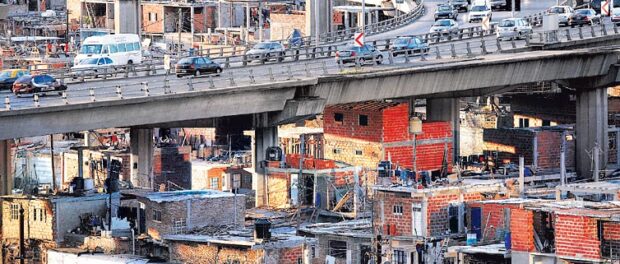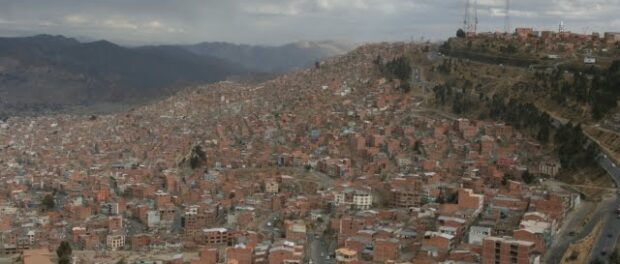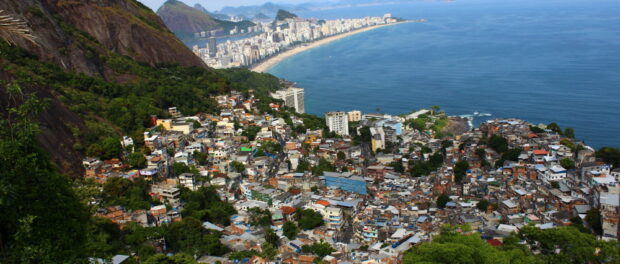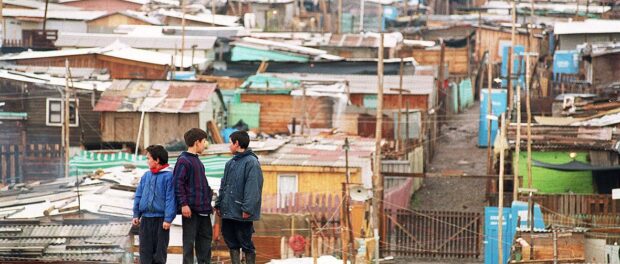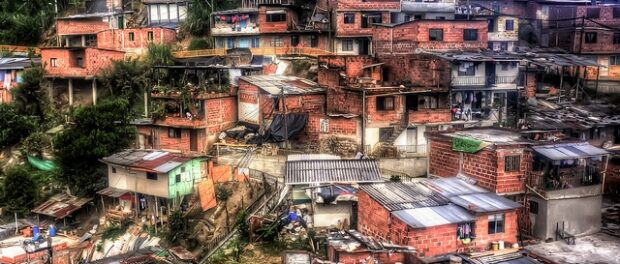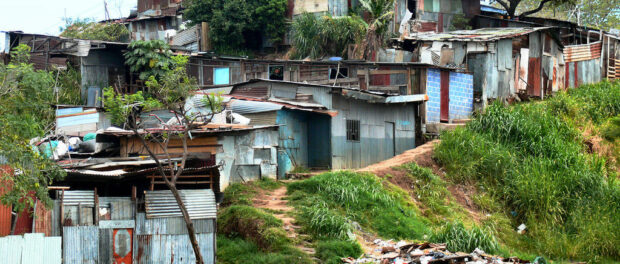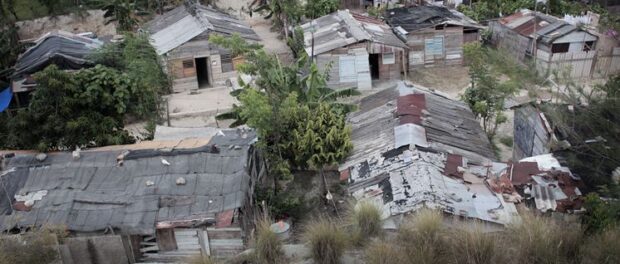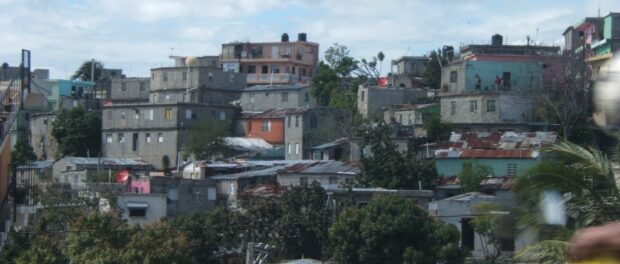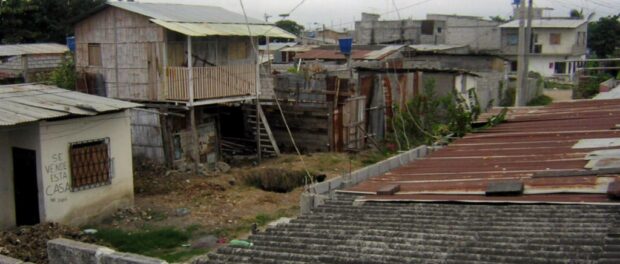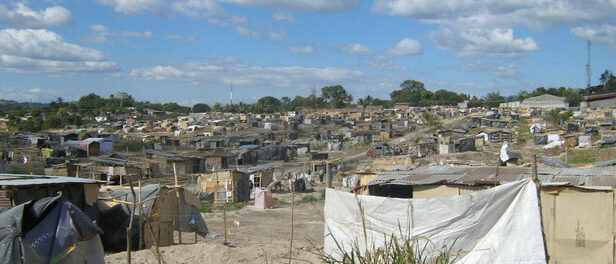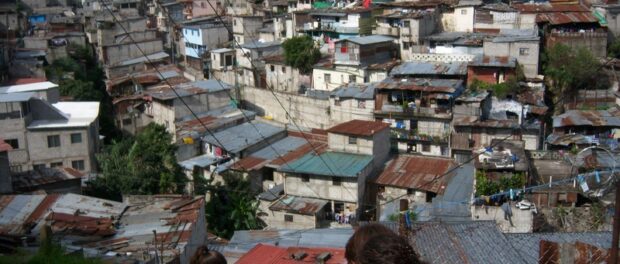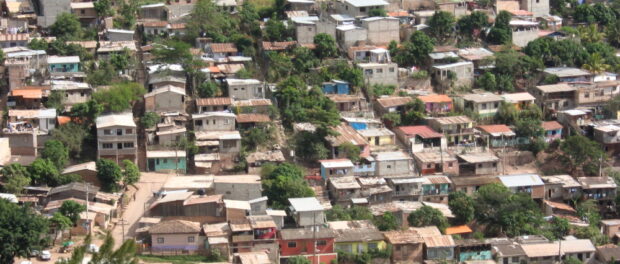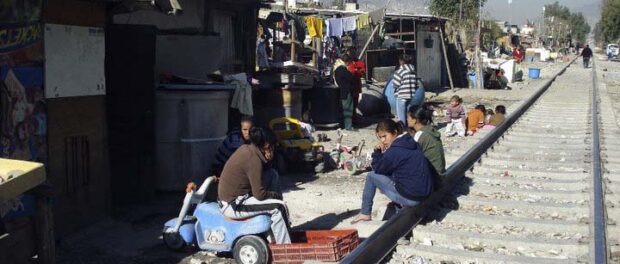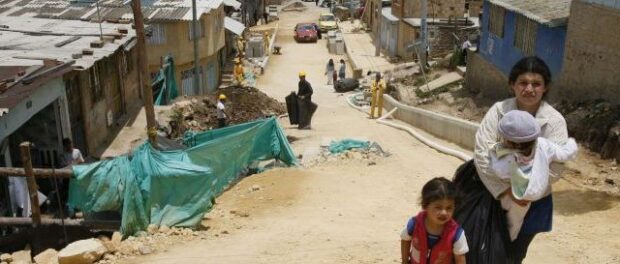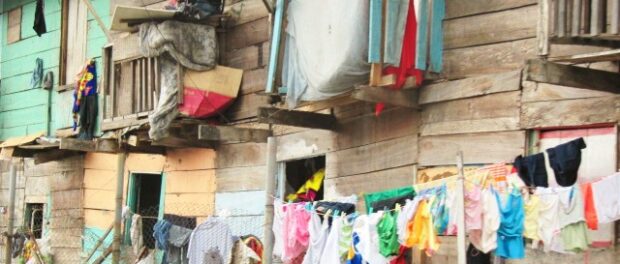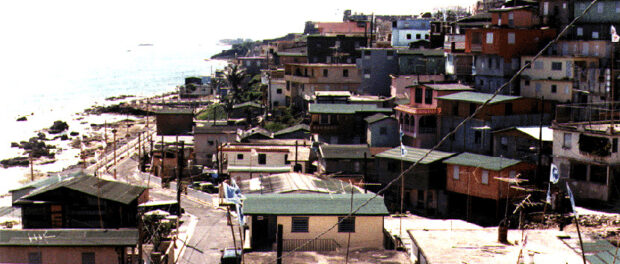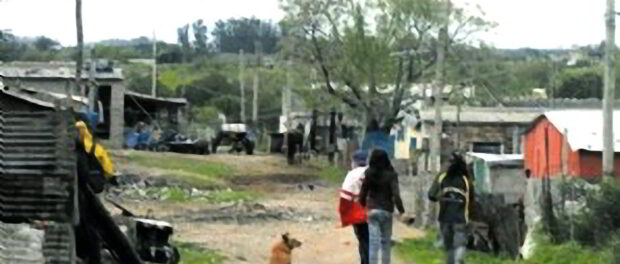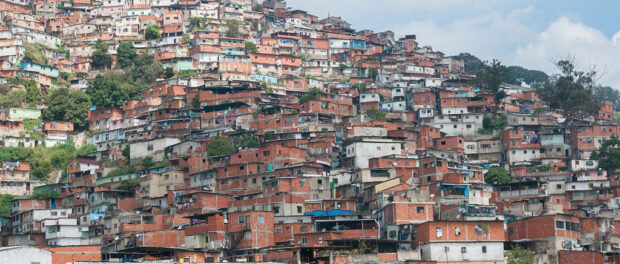‘Favelas’ Across Latin America – Interactive Map
Read below for country-by-country summary of data on map:
Reflecting on the huge generalization which results in using just one term, ‘slum’ for example, to sum up all the informal settlements of the world pushes us to leave Brazil a little and travel the world investigating the languages of different places. By examining specific facts and data in different places, we discover that informal settlements all have things in common, but the socio-political background is always different, as is the response to this phenomenon. This context creates the term used in each place to describe their informal settlements. In the case of Latin America, the focus of this article, the well-known names have a strong negative weight with few exceptions. Through the names in each situation we can see the marginalization inherent in each context, negating residents’ right to the city, with all the rights and responsibilities this brings.
From Patagonia to the Rio Grande it is common to come across informal settlements, each with its own particularities depending on the historical and social background of its residents, created from opportunities or failings of each micro region and the political contexts they occupy. They are established and develop over time and come to form an integral part of the city. However, they remain on the margins, not given full rights, as settlements established because of a lack of adequate formal housing, constructed on vacant land, initially without title, and developed informally. In the beginning they were formed without basic public services like water, electricity, health and education; over time some services come but are almost always inadequate. This is because the victims of marginalization, ignorance, stigma and euphemisms live in these settlements…
Below is a voyage through Latin America and its informal settlements (in alphabetical order here; scroll down for interactive map):
Argentina
Name: Villa miseria, asentamientos, villas de emergencia
The name villa miséria–directly translated as ‘village of misery’-was taken from a novel written by Bernardo Verbitsky in 1957, Villa Miséria También es América, which describes the precarious conditions in which the immigrants who arrived from the provinces during the Infamous Decade (1936-146) lived. Currently villas misérias can be found in the main cities of Argentina like Buenos Aires, Rosario and Cordoba. Often these areas don’t just receive newcomers from the provinces but also foreigners coming from neighboring countries.
Data: According to estimates in 2004, there are 640 of these villages around Buenos Aires–home to 690,000 inhabitants or 111,000 families. The best-known are Villa 1-11-14, Villa 31 and Villa Lugano. According to the Population Reference Bureau, in Argentina 33% of the urban population live in villas miserias.
Bolivia
Name: Ciudadela, asentamiento urbano
In 2005 The World Bank financed the project ‘Barrios de Verdad’–Real Neighborhoods–in La Paz. During the same year the Law of Harmonious and Strategically Planned Human Urban Settlements was passed in order to establish public policy in these areas.
Data: 50% of the urban population in Bolivia live in ciudadelas according to the Population Reference Bureau.
Brazil
Name: Favela
The story of the term favela, the name given to Brazil’s informal settlements since 1897, is increasingly told. After fighting in The Canudos War, soldiers came to Rio to receive land promised to them but they received nothing. They settled on what is today known as Morro da Providência in Rio de Janeiro and called it Morro da Favela (Favela Hill) in homage to the favela plant which grew easily on the hills and mountains of Canudos. During the next few decades the rural exodus and the lack of affordable housing in urban centers stimulated the creation of hundreds of such settlements throughout Brazil.
Data: 12 million Brazilians live in favelas throughout the country. The city with the largest number of favela residents today is Rio de Janeiro with more than 1,000 favelas, reclassified as 625 by the City government in 2010. Brazilian favelas are responsible for moving R$38.6 (US$ 17.4) billion each year, which is equivalent to the GDP of Bolivia or what would amount to the economy of the 5th largest Brazilian state. Today, 65% of favela residents are deemed middle class.
Chile
Name: Población callampa, campamento
Callampa is the name of a mushroom which appears suddenly and reproduces rapidly in any environment, even those too damp or with little light. These settlements appeared in Santiago in the 1960s and continued to proper until the 1980s with the migration from country to city in search of better opportunities. The settlements are considered uninhabitable and are also called campsites or campamentos. Since the 1990s Chile has dealt with the lack of adequate housing through a large investment program in public housing where 20% of the population with the lowest incomes receive government housing.
Data: According to a report released in 2005 by the NGO Techo, there were 453 settlements home to 8,000 families.
Colombia
Name: Barrios bajos, tugurio, barrio de invasión, barrio marginal, comuna
Barrios bajos, low neighborhoods, refers to the settlements located in Colombia. Amongst other names, they are also knows as comunas, which originally referred to a district of an urban area but is today associated with low-income areas and used pejoratively. Colombia considers these areas to be the poorest. In the last few years, the barrios bajos of Medellín have become known for innovations in mobility.
Data: Comuna 13 in Medellin is home to approximately 135,000 people. 18% of the urban population in Colombia live in barrios bajos according to the Population Reference Bureau.
Costa Rica
Name: Tugurio
According to the Real Academia Española, the word tugurio comes from the Latin word tugurĭum which means “a small and miserable dwelling, house or establishment.”
Data: Currently in Costa Rica nearly 50,000 families live in tugurios.
Cuba
Name: Llega y pon
This name literally means ‘arrive and put.’ Ten years ago the government tried to remove residents and make them return to their province of origin, but they didn’t succeed. The residents were so firm that they now are supplied with water, electricity and receive healthcare and education, although their homes are still considered illegal which impedes the residents from being able to ask the government for work or a share of the food offered by the state. Residents are called los palestinos (the Palestinians) because they live in similar conditions to refugees.
Dominican Republic
Name: Barrio malo
Barrio malo translates directly as ‘bad neighborhood.’ The housing of these citizens, who are marginalized by society, lacks basic sanitation, water and electricity. As if that were not enough, in 2012 abusive measures of control were taken in the El Capotillo neighborhood by the National Police and the Management of the Control of Drugs in the country, invading residents’ properties. After numerous complaints from residents, a spokesperson for the National Police communicated that measures would be taken if any policeman committed any further abusive actions during these operations.
Data: 18% of the urban population of the Dominican Republic live in barrios malos, according to the Population Reference Bureau.
Equador
Name: Guasmo (Guayaquil), suburbio, invasión, barrio marginal
The term guasmo is particularly associated with the city of Guayaquil and refers to the tropical guasmo tree which used to grow in the area cleared for settlement when, in 1948, the government expropriated 19 million square meters of land from a wealthy family to offer to new inhabitants. ‘Invasions’ by people migrating from the countryside to the big city started in the 1950s. Take a look at the series of photographs by ten students who live in Guasmo Sur.
Data: 94% of Equador’s urban population live in guasmos according to the Population Reference Bureau.
El Salvador
Name: Champerío, tugurio, zona marginal
Champerío comes from the word chamapan, a náhuatl word (indigenous language of the region) which means “house.” This turned into champa which according to the Real Academia Española designates a shack which serves as housing. They are built with four vertical wooden columns with a roof of palm leaves and branches. And so, a champerío is a community made of champas.
Data: In a country the size of Sergipe, the smallest state in Brazil, with the same population as the city of Rio de Janeiro, 47% of the population are considered poor and champeríos are found throughout the country, but more concentrated in the capital where the rural exodus remains strong.
Guatemala
Name: Arrabales, asentamientos, champas
The La Limonada neighborhood is home to 60,000 Guatemalans and is one of the biggest settlements in the Americas. In 2012, The World Bank launched the same recuperation of human settlements project as the one started in Bolivia in 2005.
Data: 43% of Guatamala’s urban population live in arrabales according to the Population Reference Bureau.
Honduras
Name: Barrio
Barrio in Honduras, according to the Real Academia Española, is a group of houses or a village which is dependent on others in the population even if they are physically separate.
Data: 35% of the urban population in Honduras lives in barrios, according to the Population Reference Bureau.
Mexico
Name: Cinturón de miséria, zona marginal, ciudad perdida, cartolandia, bariada, arrabaldes, colonia, baja precarios
The cinturón de miséria (belt of misery) is an informal outer zone surrounding the city.
Cartolandia comes from cartón (cardboard) and landia (from the English ‘land’) referring to the materials used to construct the original housing. Cartolandia is located on the edge of Mexico City and Mexico State. Mexicans and Central Americans who arrive on the bestia (a cargo train which they board to go to the north or to get to the United States of America) live here. This colony, which formed 20 years ago, is home to around 600 people.
Data: 18% of the urban Mexican population live in these belts or ‘cinturons’ according to the Population Reference Bureau.
Nicaragua
Name: Barrio, asentamiento espontáneo
Despite being a country with a high level of poverty, the Law of Regulating, Ordering and Naming of Informal Human Settlements requiring the development of these barrios has existed since 1999.
Factfile: 45% of the urban population in Nicaragua live in barrios according to the Population Reference Bureau.
Panama
Name: Barriada bruja, invasión, ghetto, barrios pobres
The origin of the name barriada bruja is uncertain but it can be translated directly to English as ‘witch neighborhood,’ which carries a very negative weight. They are generally inhabited by rural migrants or foreigners.
In 2009 the governments of Panama and the United States of America signed an agreement to provide assistance to young people from the most disadvantaged neighborhoods.
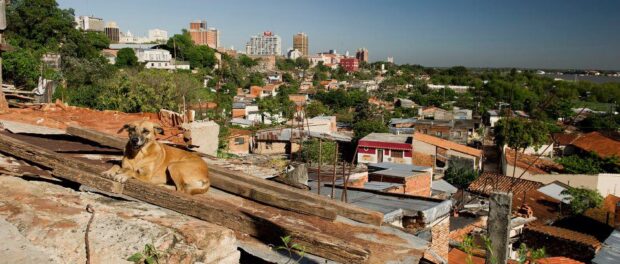 Paraguay
Paraguay
Name: Asentamiento, bajo, chacarita
According to the Coordination for Spontaneous Settlements (CAES by the Spanish acronym) the housing defecit of the country is 800,000 houses. Take a look at this video from the Landfill Harmonic.
Peru
Name: Pueblo joven, asentamiento humano, invasión, barracón, conos
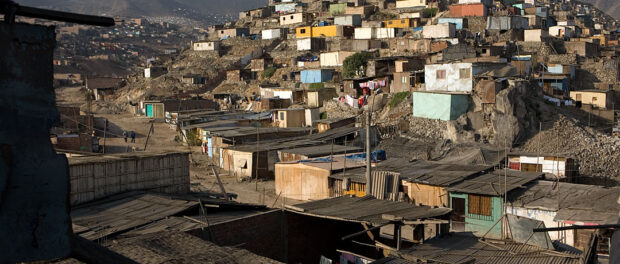
In the 1940s an intense migration from rural areas began towards the city of Lima with people searching for a better quality of life. Those migrating were mostly Amerindians and mestizos. The SOLAC association is in charge of developing the conos (cones), named because of the way the settlements were constructed. There have been various attempts, all in vain, to make the residents return to their places of origin (generally the Andes).
Data: 36% of the urban population live in pueblos jovenes according to the Population Reference Bureau
Puerto Rico
Name: Arrabal
According to the Real Academia Española, an arrabal is a neighborhood outside of the city limits to which it belongs. There was population growth with the boom in the sugar cane industry in the 1930s, but there was no space in San Juan to house these new workers. Because of this they created informal neighborhoods known as arrabales, at the time constructed of wood and corrugated iron.
Uruguay
Name: Cantegril, cante
Informal settlements in Uruguay are known as cantegriles or cantes, making a pejorative and ironic reference to the luxurious Punta del Este neighborhood of the same name, or the country club frequented by the region’s elite: the Cantegril Country Club.
Data: According to official sources, 6% of the population of Uruguay live in these spontaneous settlements.
Venezuela
Name: Rancho, barrio, cerros
According to the Real Academia Española, a rancho is a group of houses or village dependent on others in the population even if they are physically separate. In Caracas, the ranchos started to form shortly after the peasant exodus caused by the petroleum boom in 1960. Take a look at photos of ranchos in Caracas.
— Article researched and written by CatComm intern María Alejandra Revelo-Imery, a linguistics graduate student and translator. Originally published on RioOnWatch here. Map by Nicholas Pope.

